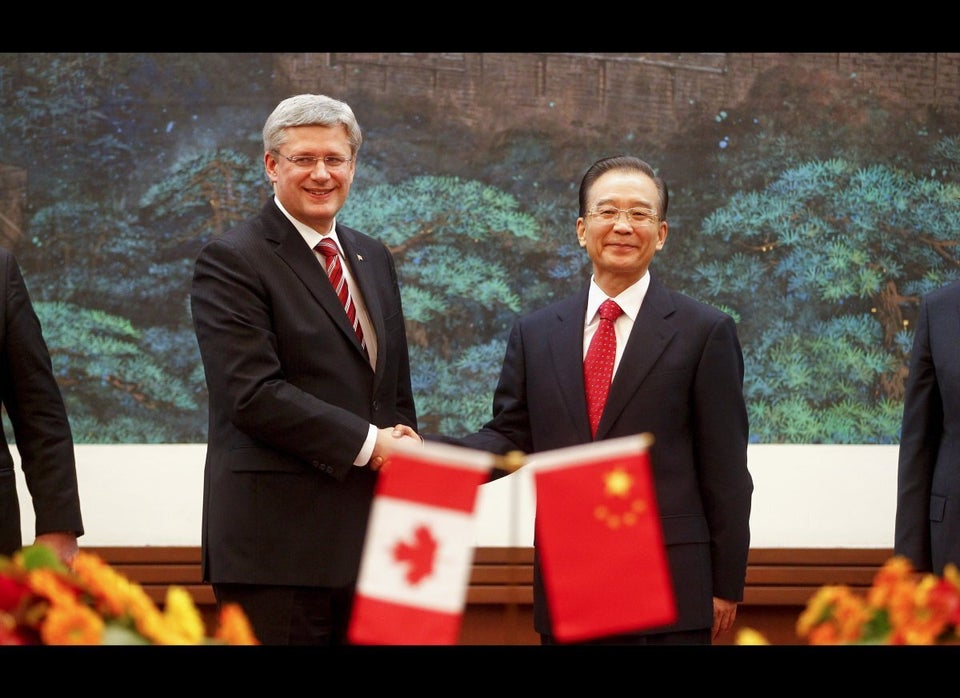
Canada's entry into the Trans-Pacific Partnership (TPP) negotiations last week has been hailed as a new direction for the country's trade policy. For Canada to take full advantage of the TPP consultations, it would be wise for Canadian policy makers to also bring to the table new views on trade.
For decades, Canada's position on trade has been based on the paradigm that products and companies have clear national identities. A Canadian export was treated as entirely "Made in Canada," a Chinese import was considered "Made in China." This national production paradigm has helped shape the main tenets of our current trade policy.
On the one hand, policy makers fight for market access in foreign countries since increased export opportunities are believed to strengthen Canadian production and employment. On the other hand, they impose restrictions on foreign access to Canadian markets since imports are believed to threaten our firms and jobs. In trade negotiations, policy makers are only willing to reduce import restrictions if they get increased market access in return.
The national production paradigm, however, has never been so disconnected from reality as it is today. Thanks to reduced communication and transportation costs, companies have long abandoned the practice of producing goods in a single country. Through outsourcing and off-shoring, they have sliced up their supply chains and dispersed their production activities across multiple countries, leading to what are known as global value chains (GVCs). Bombardier's C Series is a case in point. The airplane's supply chain currently spans from Canada (design, assembly and testing) to China (fuselage), the United Kingdom (wing structures and winglets), Italy (tailplanes), Germany (landing gear) and the United States (engine parts and other components).
The rise of GVCs is reflected in international trade statistics, with countries more and more relying on imported inputs to produce their exports. For instance, Canada produces only 70 per cent of its exports value at home, with imported inputs accounting for the remaining 30 per cent. Our second largest trading partner, China, produces only 50 per cent of its exports value itself, therefore invalidating the notion that "Exported by China" means "Made in China."
The new reality of GVCs challenges the traditional wisdom on trade policy in a number of ways. First, it questions the notion that exports reflect a country's competitive strength. Take China's rising high-tech exports as an example. If we use the national production paradigm, it seems that the country has rapidly developed a competitive advantage in high-technology products. This is a statistical mirage, however, because more than 80 per cent of the content of its high-technology exports is manufactured outside of China. And the production activities that do take place in China are mostly confined to low-end assembly processes.
Second, it is no longer the case that the Canadian economy unambiguously gains from import protection, since imported components are often complementary to Canadian-based production activities. Take the example of Bombardier's C Series again. If Canada were to raise tariffs on the import of aerospace components, this would diminish the international competitiveness of the Montréal-based company's planes, therefore reducing the attractiveness of its Canadian production and employment activities.
To strengthen Canada's competitiveness in the GVC world, new trade policies should facilitate the integration of Canadian activities into global production networks. This requires streamlining its international trade linkages not only on the export side, but also on the import side. Furthermore, it requires focusing not only on the barriers that exist at the border (e.g. tariffs), but also on those beyond the border (e.g. harmonization of regulations). By doing so, Canada will strengthen its position to attract and retain high-value-added activities. The federal government's recent commitment to eliminate all remaining tariffs on manufacturing inputs by 2015 has been an important step in the right direction.
